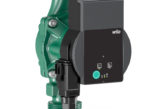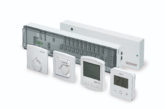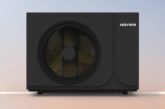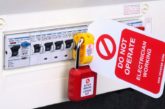
As homeowners continue to seek cost-cutting options, Jerry Whiteley, Technical Manager at the Chartered Institute of Plumbing and Heating Engineering (CIPHE) explores how plumbing and heating engineers can play a supporting role.
Given that heating and hot water accounts for over 50% of average fuel bills, there are significant benefits for homeowners who have efficient systems. From an environmental perspective, property heating accounts for nearly half of all energy consumption and 40% of the UK’s total carbon emissions – a key reason why understanding how appliances are used is so valuable.
In terms of water consumption, it is anticipated that shortages will hit the UK within the next 25 years. As a collective, we all have a responsibility to reduce the volume of water wasted. Plumbing and heating engineers can make a real difference by being a trusted advisor on system efficiency – let’s explore how.
Start with design
Before starting any type of heating or hot and cold water system installation, it’s important to assess the building occupant’s needs. For retrofit jobs, checking existing design elements and how they affect system efficiency is a frequently overlooked step. If a property has cavity wall insulation and double glazing, for example, then less heat will be lost through walls and windows.
Another factor impacting efficiency is the layout, size and capacity of pipes. In domestic properties, common plumbing problems occur when alterations to an existing system are made incorrectly. For far too long, many have relied upon retailers or manufacturers to supply calculations but there is no one-size-fits-all. This is why starting at the design stage is fundamental.
Pipe size, layout & controls
Accurate pipe sizing is critical as getting it wrong can cause numerous issues. Pipes that are too small for their intended use could create poor water flow and pressure, plus dissipation of heat. Oversizing can also be problematic. The result being water and energy waste. To achieve efficient operation of a system, the pipework needs to be correctly sized, and this is particularly important to keep in mind when working with new low temperature heating and hot water systems. Taking a rule of thumb approach is just not accurate enough anymore as the equipment installed is finite.
Controls are also a key element of system design. These must be implemented with the end user front of mind. In many cases, keeping it simple is the answer. This way, occupants can understand how they wish to achieve their comfort levels and efficiencies. Installing controls that are aligned with what is assessed to be the customer level of understanding and capability is a critical part of ensuring their use on a long-term basis.
Insulate pipework
Another problem that must be avoided is unwanted heat transfer between pipes. Hot and cold-water pipes should therefore be separated to prevent the cold water being warmed up by heated pipework. If space does not permit this, pipes and cisterns must be fully insulated and covered with a firm lid. Insulating heating pipes also helps to prevent heat dissipation through floors or ceiling voids.
The addition of insulation does require considerations in relation to layout because it is likely to increase the space required for the pipework. For example, a 20mm diameter pipe could become 50mm with insulation. The layout of pipes is directly linked to the structure of a building as the integrity of structural joist could be affected if pipes are installed in the wrong place. As such, it is important to plan installations with the building make-up in mind.
Overall, installers should be aware of how design, alongside pipe size and layout, impacts system performance. An efficient system is one that provides the correct amount of heat by using energy in the most efficient way possible and switching off the appliance when the demand is satisfied. Achieving this objective will require correct system design, avoiding inappropriate sizing, and insulating pipework.
For further guidance, installers can visit: https://www.ciphe.org.uk/













